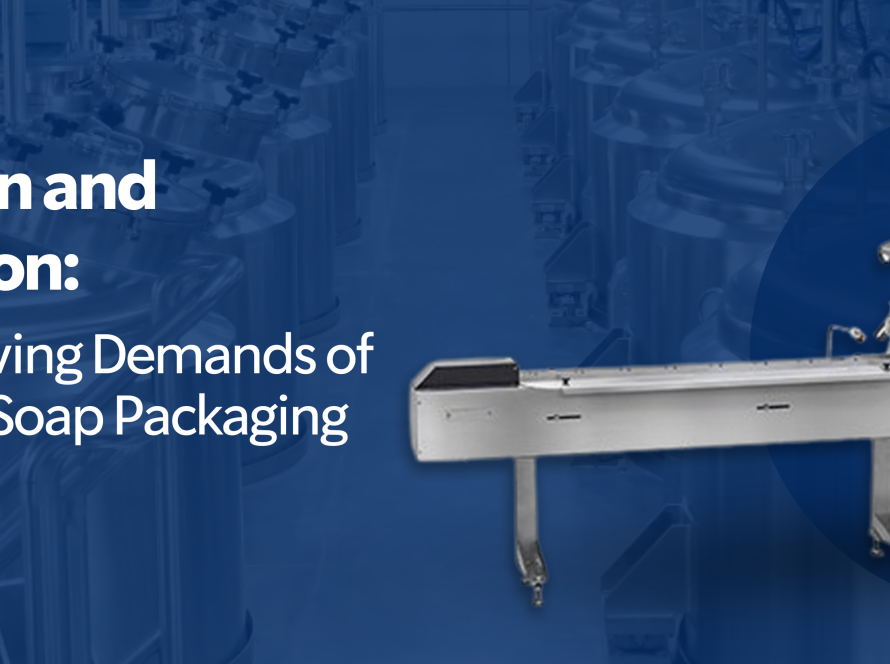The global pandemic fundamentally altered consumer behaviour, with hygiene practices taking center stage. This shift in priorities sparked a surge in demand for soap, but behind the scenes, a production battle ensued: liquid soap versus bar soap. Both rely on distinct soap manufacturing machines and production processes, and the pandemic has impacted each one in unique ways. This blog delves into the production showdown between these two hygiene heroes, exploring the differences in their manufacturing journeys and how the pandemic reshaped their respective landscapes.
Liquid Soap Manufacturing: A Symphony of Automation and Efficiency
Liquid soap making machines are marvels of modern engineering, orchestrating a complex dance of ingredients. Fats and oils are meticulously combined with alkalis to create a base solution within large mixing tanks. These tanks are fitted with automatic temperature control systems and high-shear mixers, ensuring a consistent and homogenous product. Following the base creation, water, thickeners, and other functional ingredients are precisely metered and added using automated dosing systems within the liquid soap making machines. The entire process takes place in a controlled environment, minimizing human intervention and maximizing efficiency.
The pandemic fueled the demand for liquid soap. Manufacturers responded by optimizing their liquid soap making machines to meet this surge:
Scaling Up for Efficiency: Larger batch sizes became more common to satisfy increased demand. This required significant investments in upgrading mixing tanks, pumps, and other components within the liquid soap making machines to handle larger volumes while maintaining consistent quality.
Focus on Sanitizing Ingredients: The inclusion of additional antibacterial agents or sanitizing ingredients may have increased to address heightened consumer concerns about hygiene. These new ingredients were seamlessly integrated into the existing liquid soap making machines, often through the addition of dedicated feeding systems.
Automation for Efficiency and Safety: Many manufacturers likely invested in automating processes within their liquid soap making machines to streamline production and increase output. This could involve implementing automated filling lines and robotic palletizing systems, minimizing human contact with the product and ensuring worker safety during a time of heightened health concerns.
Bar Soap Manufacturing: A Simpler Process with a Rich Heritage
Bar soap production relies on a more traditional approach, with a rich history dating back centuries. Fats and oils are saponified (combined with lye) in large kettles. This process, known as saponification, involves a carefully controlled chemical reaction that transforms the fats and oils into soap. Once the saponification process is complete, the mixture is poured into molds and allowed to cure for a specific period. This curing process allows the soap to harden and ensures a long-lasting bar.
Bar soap manufacturing machines are generally less complex compared to their liquid soap counterparts. They may include large kettles equipped with heating elements and stirring mechanisms to facilitate the saponification process. Additionally, automated filling lines and packaging systems may be present for high-volume production.
The pandemic may have impacted bar soap production in the following ways:
Shifting Consumer Preferences: A potential temporary decrease in demand for bar soap due to perceived hygiene concerns, although research on the relative effectiveness of liquid versus bar soap for virus elimination remains inconclusive. This could have led to reduced utilization of bar soap manufacturing machines in some cases.
Focus on Natural Ingredients: An increase in consumer interest in natural and organic bar soaps could have prompted manufacturers to explore sourcing sustainable ingredients for use in their soap manufacturing machines. This may have involved integrating new feeding systems to handle these alternative ingredients effectively.
Emphasis on Eco-Friendly Packaging: Concerns about plastic waste may have led to a rise in eco-friendly packaging options for bar soap. While the soap itself doesn’t require complex packaging compared to liquid soap, this shift could have influenced the design and selection of equipment used for wrapping and bundling finished bars of soap.
The Future of Soap Production: A Coexistence or a Clear Winner?
Both liquid soap and bar soap have their place in the post-pandemic world. Liquid soap offers convenience, perceived hygiene benefits, and versatility. Bar soap can be a more sustainable and cost-effective alternative. As technology advances, production processes for both types of soap may see further optimization, potentially leading to development of eco-friendly ingredients and biodegradable packaging for liquid soap, requiring potentially new or adapted liquid soap making machines with features
The Final Lather: A Symbiotic Future for Soap
The pandemic may have sparked a production battle, but ultimately, both liquid soap and bar soap play a vital role in maintaining hygiene. As consumer preferences evolve and technology advances, we can expect to see further innovations in soap manufacturing machines for both types of soap.
Are you a soap manufacturer looking to optimize your production processes? Geonenix® offers a wide range of advanced soap manufacturing machines for both liquid and bar soap production. Contact us today to learn more about how we can help you create high-quality, sustainable soap products.







